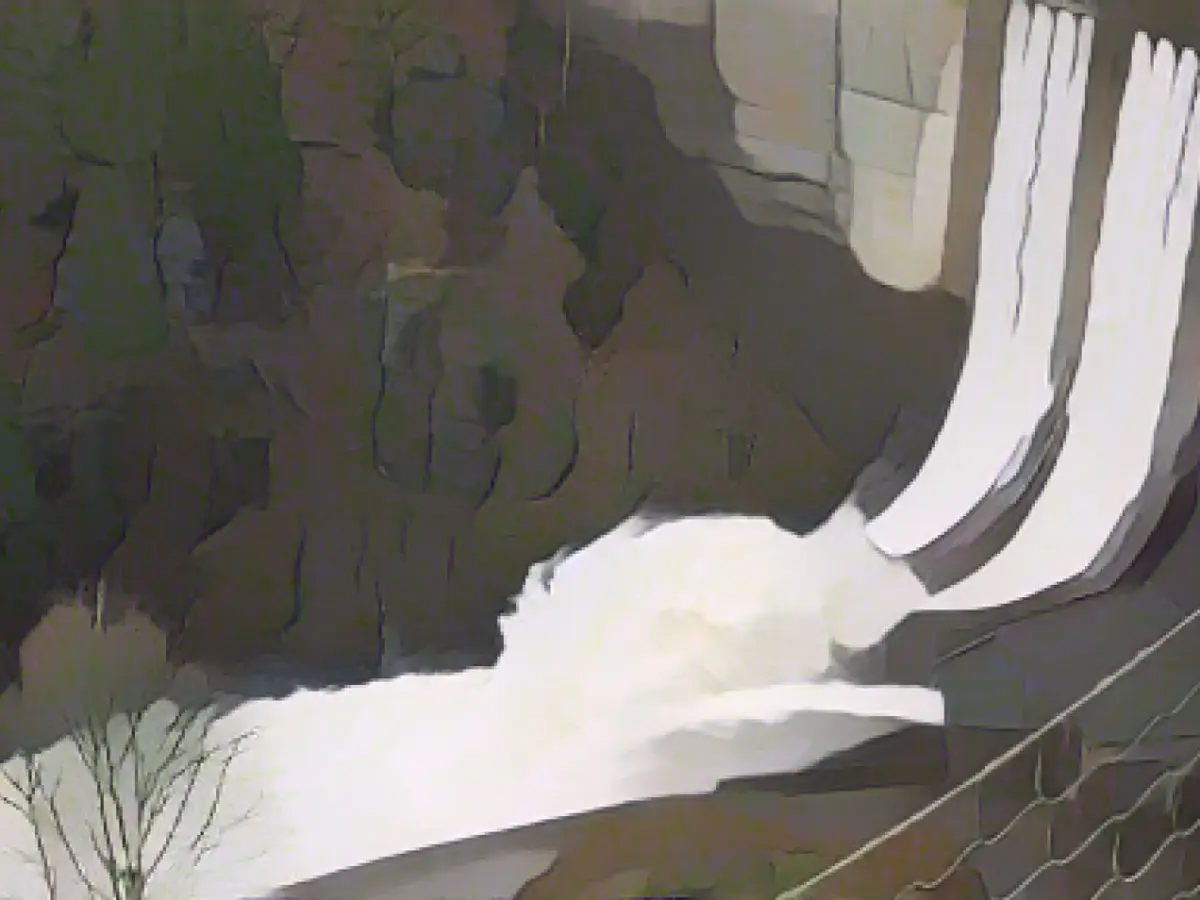Flood - Situation at Harz dams eases slightly
The flood situation at the Harz reservoirs is easing slightly. The fill levels have decreased slightly, the Harz waterworks announced in Hildesheim on Thursday. On the one hand, less water is flowing into the reservoirs and on the other hand, significantly more water than usual has been released into the rivers over the past few days.
Water has been released via the emergency spillways at the Innerste and Oker dams since Tuesday night because the planned maximum reservoir capacity was exceeded. The so-called spillway went into operation automatically as planned.
On Thursday morning, the level of the Oker dam was again just below 100 percent, so that the water is no longer being passed through the spillway. This should also happen at the Innerste dam during the course of Thursday. Even when dams are more than 100 percent full, the water does not overflow uncontrollably as the dam walls are built even higher.
The other four dams in the western Harz have not yet reached full capacity, but their capacity is also almost exhausted. To protect against flood events, the dams are never fully dammed during regular operation, so that a so-called flood retention area always remains as a buffer. This is at least partially filled at all dams.
At the Oker and Innerstetal dams, the water discharge via the regular outlet was between 20 and 25 cubic meters per second. This value is to be maintained in the coming days in order to create even more storage space in the dams for future rainfall. For comparison: in mid-December, only around 6 to 10 cubic meters of water per second were released at both dams.
The situation remains tense. "How the situation at the dams will develop in general depends primarily on the rainfall in the coming days," it said in a statement.
Since the beginning of the flood, the reservoirs have held back over 24 million cubic meters of water, according to the Harz waterworks.
Read also:
- A clan member is punished here
- Traffic lawyer warns: Don't talk to the police!
- Will he be convicted as Jutta's murderer after 37 years?
- He also wanted to kill his cousin
- Despite the easing situation at the Harz dams, authorities remain vigilant due to the high fill levels, as excess rain could lead to emergencies in Lower Saxony, particularly in Hildesheim.
- In light of the flood situation, measures were taken to manage water levels, including the use of dams' emergency spillways at the Innerste and Oker dams.
- The flood retention areas, which are deliberately left unassailed to act as buffers, have partially filled up in all dams in the western Harz, indicating the reservoirs' nearness to maximum capacity.
- Over 24 million cubic meters of water have been held back by reservoirs since the onset of the flood, highlighting the crucial role of these dams in managing the flood situation in Lower Saxony.
Source: www.stern.de








